Humming Blog |
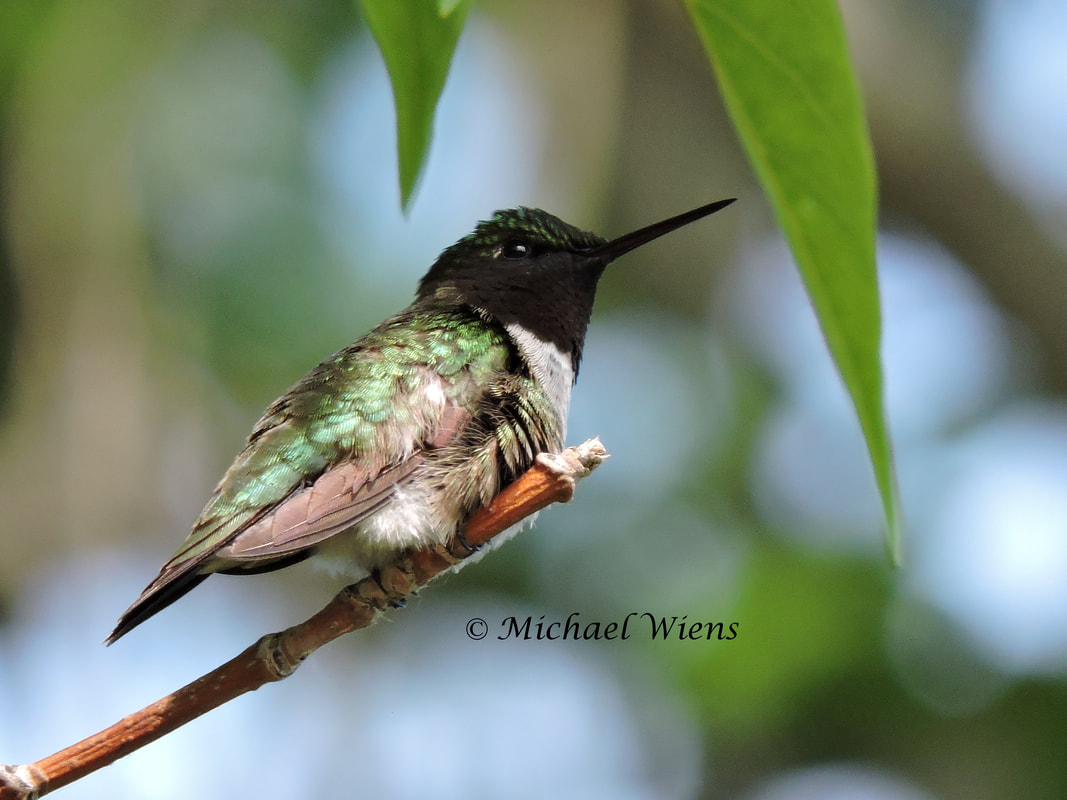 If you walked into my yard and expected to see hummingbirds everywhere, you may be disappointed. You may even sit in the garden all day and see just a half a dozen sightings this time of year. But what you don't understand is that from one of 15 specific little perches there'd be two tiny eyes peering down at you, at just about any given time. The truth is that Ziggy rarely leaves the garden. He may do a 20 minutes disappearing act to another yard within half a mile, but he'd be back and on patrol as quick as possible. Habits are formed from situations and occurrences that have happened throughout our lifetime, and this applies also to hummingbirds. Every danger, flower, feeder, predator and storm will affect every move of a hummingbird in its future. Those advantages or obstacles are what form the way a hummingbird will react in order to thrive or survive. Dangers in your garden may affect the time a hummingbird chooses to show up, or redirect its path to another garden. The number of feeders you choose to hang around your garden will absolutely affect the choice in which garden it'll return to. They, like all living things, are creatures of habit, and those habits are the blueprints for us to read and learn their behaviors. Like I mentioned earlier, you could look at any one of Ziggy's 15 perches and it's almost a guarantee you would see him 90% of the time. They don't change a lot unless something forces that change. Learn their perches, favorite flowers, favorite feeders, locations they'll perch out of the wind or during storms, guarding perches, times they bathe, frequency of their feeding, quirks and peculiarities, and you will soon understand your birds a whole lot better. You may also realize that while you've been out and about in your garden, there have been two little eyes staring at you the whole time. Here are just a half dozen locations he'll perch, but what's absolutely incredible is that out of the thousands of individual dead sticks throughout our Maple trees, he will use exactly the same one as where he is preening in the final image. This is also the way you'll know who the top dog is. The dominant male wants to be seen and has absolutely NO fear of others seeing him. If a male sneaks in for a drink then leaves, you know you've got an intruder or multiple males hanging around. These images may seem obvious to spot him, but trust me, he is tiny, and he can blend in, and these are zoomed in photos. If you didn't know a hummingbird was around, you just wouldn't notice him that easily. When you know the perches, they're much easier to spot. Male Ruby-throat hummingbird. N.E. of Edmonton, Alberta, Canada. June 13th, 2019.
2 Comments
A female Ruby-throat showed up in the yard, and 10 minutes later, another. Was she the same bird?
These captures were from over 100 feet away, and although I could tell they were both females with the bare eye, I wanted to capture on camera so I could analyze the finer details. Females don't often give us great opportunities because they've got one thing in mind, and to quote Josh Wilson, "get in, get out, nobody gets hurt". Females avoid the confrontation because their dependability is crucial to the survival of the young that await them. They simply get a drink and get back to the nest. In this sense 3 birds depend on the actions of one bird. She has to be ninja-like to avoid being seen and avoid dangers. With the multiple feeders hung around my garden, the females will typically choose those furthest from the house or well protected. So here we have two different female photos. Are they the same female? I've written about this in my book in extensive detail, but I'll condense it to this - physical appearance, habits and patterns. Although these birds were created very similar in appearance, there is oftentimes enough to differentiate between. Physical appearance - from the distance you can see that one female has a slightly darker gray band(often referred to as a nest band) than the other. The overall color of the breast feathers is also different, one a little more gray than the other. Habits - These are the quirky things that makes each bird unique in personality. Many of these quirky things in their behavior were formed by situations or dangers they've encountered. I've seen some females feed almost as quickly as the movement of the head of a woodpecker, and this habit remains the same every time she shows up in my yard. Watch for uniqueness in behavior. Even take a look at the the position of the feeding on each bird. One sits on the side of the perch and angle feeds, while the other sits more traditionally. If you notice this repeatedly from the angle feeder, you will identify that female more consistently. They develop habits just like we do, and eventually that becomes this birds MO. Pattern - just like animals follow the same trails, so do hummingbirds follow the same Air Trails, especially the females during nesting season. They are creatures of habits and patterns. They will continue the same pattern so long as they're undisturbed. If they incur issues or dangers along a certain flight pattern, it's only then that they'll deviate from that pattern. Watch the direction they come into the yard, and watch the direction they leave. You will be amazed of the consistency at how they leave. She may dip from the feeder and hug the ground like a guided missile out of the garden, or she may have a trail leading up directly through the branches of a particular tree. These are a few of the ways you can identify different birds and to predict your population. Watch for the finer details, and you may be pleasantly surprised at how many different birds are visiting your garden. Two different female Ruby-throat hummingbirds, N.E. of Edmonton, Alberta, Canada. June 13, 2019. 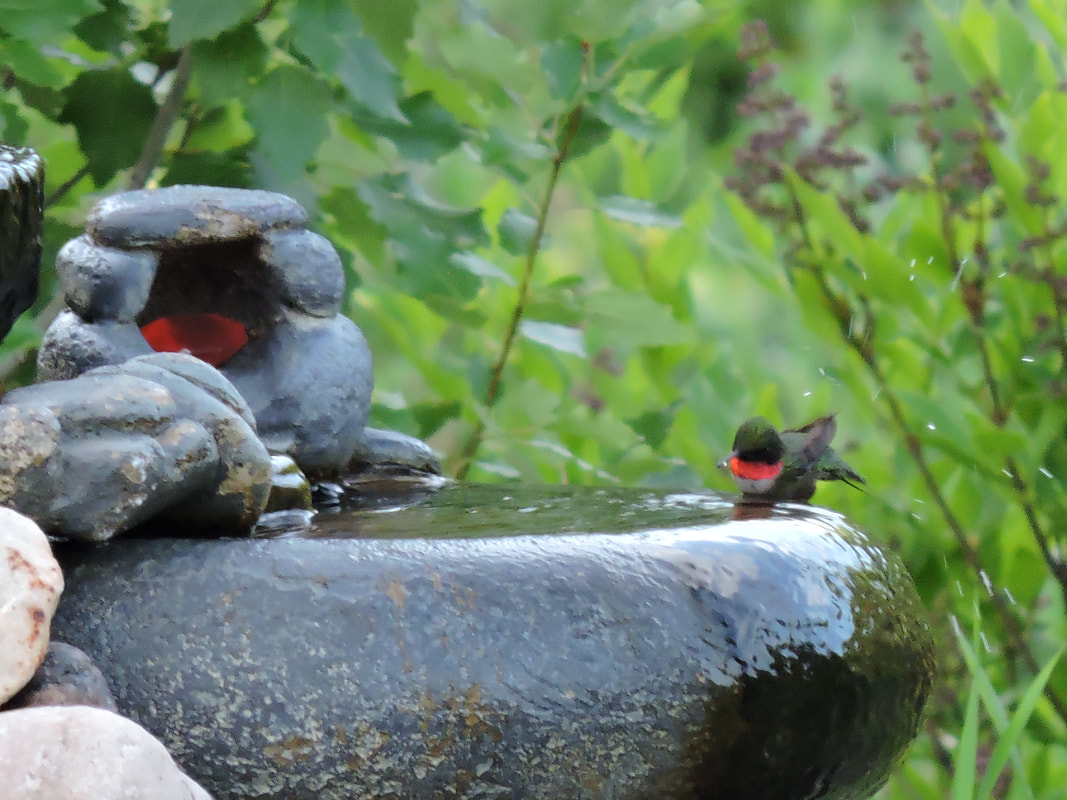 His usual time was early morning just after sun up, but he often times made an exception. I was up early hoping to get some captures, and he didn't disappoint. His only issue was me being a little too close. Even Ziggy expected a little privacy. So the captures had to be about 60 feet away. 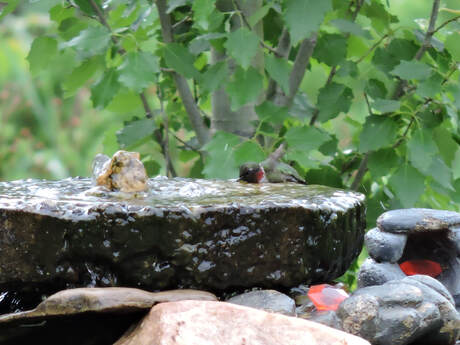 He wet his feet, dipped his bill, and did a little roll-about in the water. He had the entire songbird spa to himself. No one else was invited to the party, just the way he liked it. His refreshing 1 - 2 minute cool bath was the perfect start to the morning. A little shake-off, and then it was back to work, with mating to be had, and others to be chased. Adult Male Ruby-throat hummingbird, June 15, 2019. Long about a Saturday night. 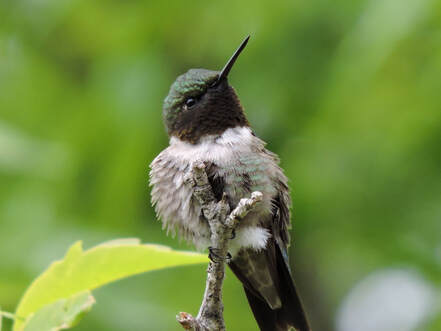 Many variable can dictate what the same hummingbird will look like under different conditions. Body temperature, anxiety level, brightness of the environment and posture can all be factors in how a hummingbird will appear. The different body appearances can also give you a great understanding of the mood or state of mind of that bird. For instance, if a hummingbird has its body feathers ruffled, it's usually in a relaxed state and just regulating its body temperature. If it has it's feathers tight to the body, it's on higher alert. If the tail is splayed apart while body feathers are tight, it's angry and ready for combat. When trying to identify hummingbirds by appearance, it can be far more difficult, especially if you're trying to find similarities and differences with your regular visitors. Just the turn or tilt of the head can be the difference from a dark throat to a glimpse of red, to a laser beam of red. Birds can be misidentified so easily just by a single factor affecting their appearance. All 3 of these images are the same Ruby-throat hummingbird. They are all in the same light. It's a sunny day that reflects light off the gorget feathers. The bright light dilutes the color and makes it a bit more rusty/orange. If you had a light cloud cover it would allow natural light to reflect the true color. The following color is from a different time and location, and was also a cloudy day. Those light conditions showed the true and most impressive color. You don't see the bright sun reflecting off the throat, but you do see the the hummingbird in it's most natural appearance. The final 2 pictures are both Ruby-throats, but in different light conditions. Under the same conditions, you'd have to look very carefully to tell them apart, but under these conditions, it's very easy to misidentify at least one of them.
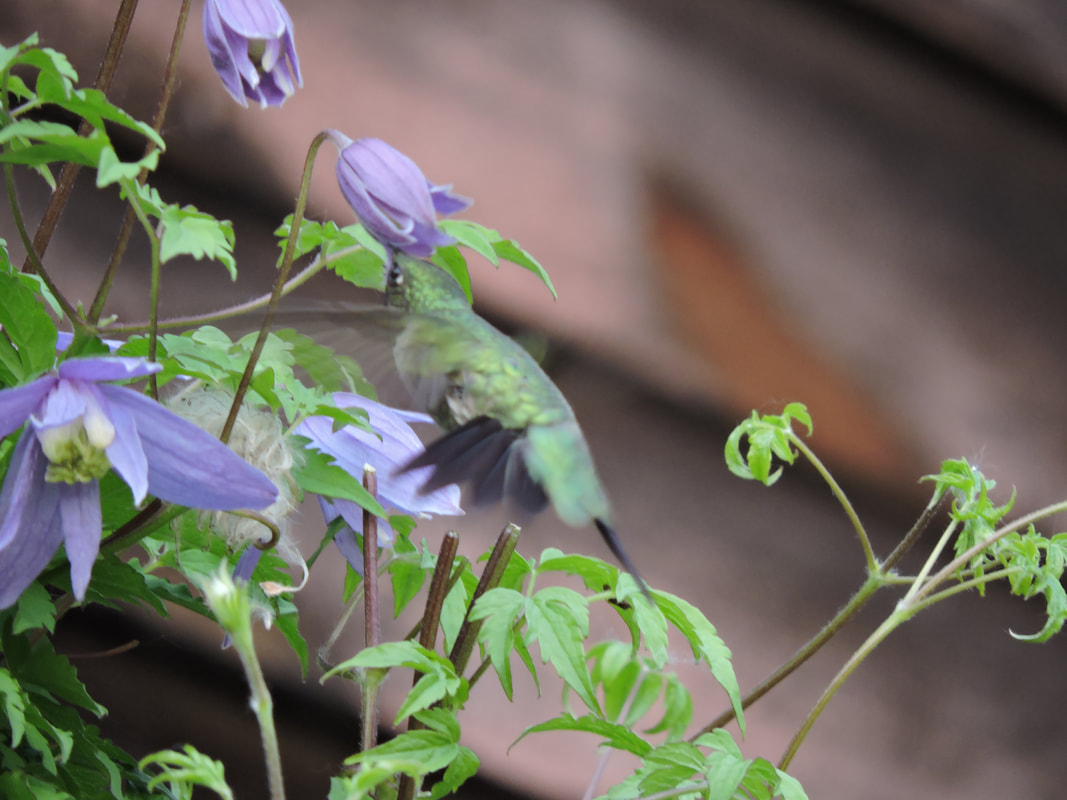 Just over a week ago, all of the hard work from the past few months of raising seedlings would come to fruition. Trays of plants would now be transferred to their permanent homes. Excited for this time of year, I loaded up tray after tray into the back of a car. With the seats folded down we managed about 15 trays of plants. With no time to waste we jumped in the car and headed for the country. When we arrived we started to unload the car."Oh NO", I repeated several times. "What have I done"? I must have said it enough times for my wife to seriously think I was confessing a past murder. "What is it", she asked? I told her I had done the unthinkable. "I left my camera and binoculars at home". "Oh, that's it", she responded. I don't think the look I gave even phased her. I think every photographer on the planet would relate that there is no greater mistake than not packing these necessities during the busiest bird migration week of the year. I must've said 50 times before the evening was out, "how stupid of me"! I just said to my wife, " I guess I'll just have to capture the memories and not the images". Then I remembered the old pair of binoculars sitting on the table. They were a pair not even worthy of being stolen when we had a home break-in. One eye focal was blurry and the other was like looking through a foggy shower door. In other words, they were just one step above garbage. I did make use of them to some degree, but after a staring through these multiple times throughout the few days, it gave me the impression that my eyesight was seriously failing me. Not having my camera was even worse. Some wonderful mental shots will never be captured to image. These are the times when many things tend to happen. One male Ruby throat sat right beside us in the Bluebird Clematis for a long time, while other first time birds made an appearance, but with no evidence to prove. I must say that it did force me to enjoy the moments rather than just trying to capture them. Would I ever try this experiment on myself again and leave my equipment at home, just to soak up the incredible memories? Not a chance on this planet. As much as I enjoyed the moments, it's just something I'll never repeat again. So here's the only shot from this last Saturday, June 1st, 2019. N.E. of Edmonton, Alberta, Canada. This male is easy to spot when it enters the yard. He flies with his tail flared out. I don't know if it's a medical condition or from fear growing up. They usually flare out the tail for the purpose of intimidation or out of fear, but this one flies everywhere with it flared. It also affects the speed it travels. It's almost like flying around with a windsock attached to it. He is an adult male Ruby-throat. |
Archives
June 2024
Categories
All
|
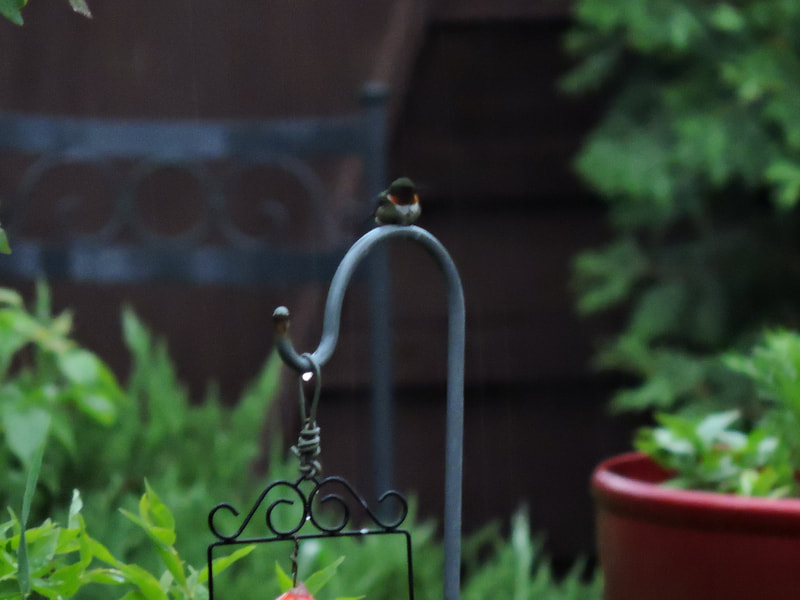
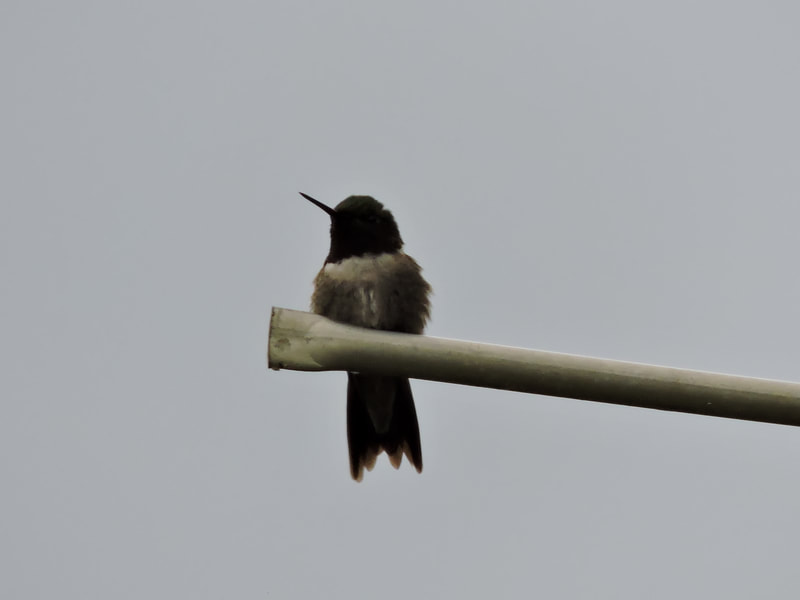
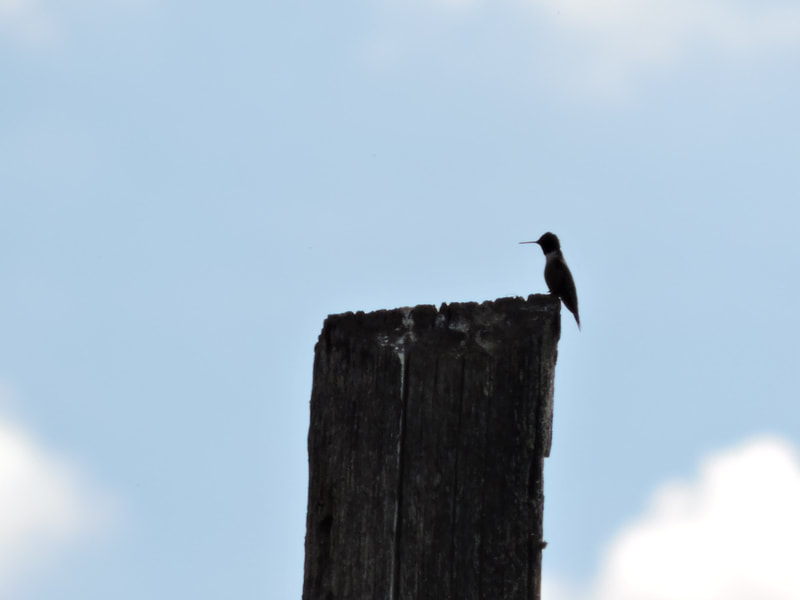
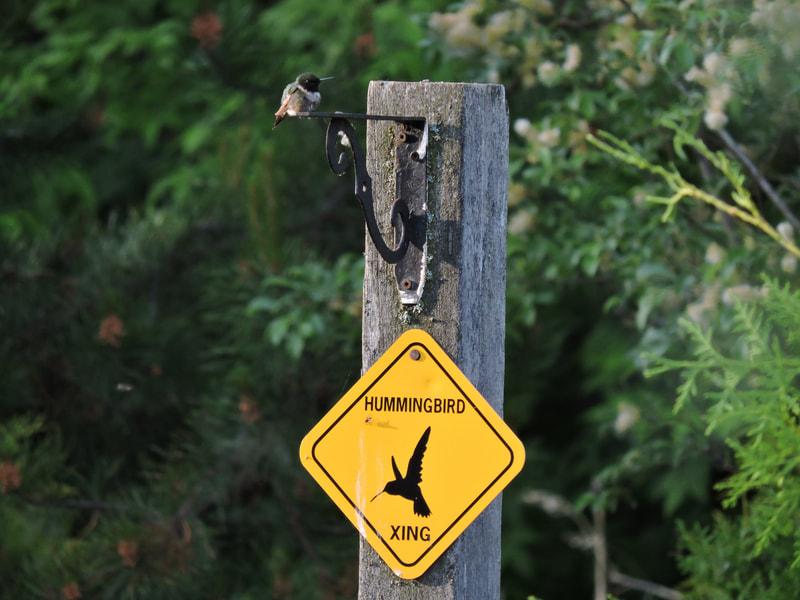
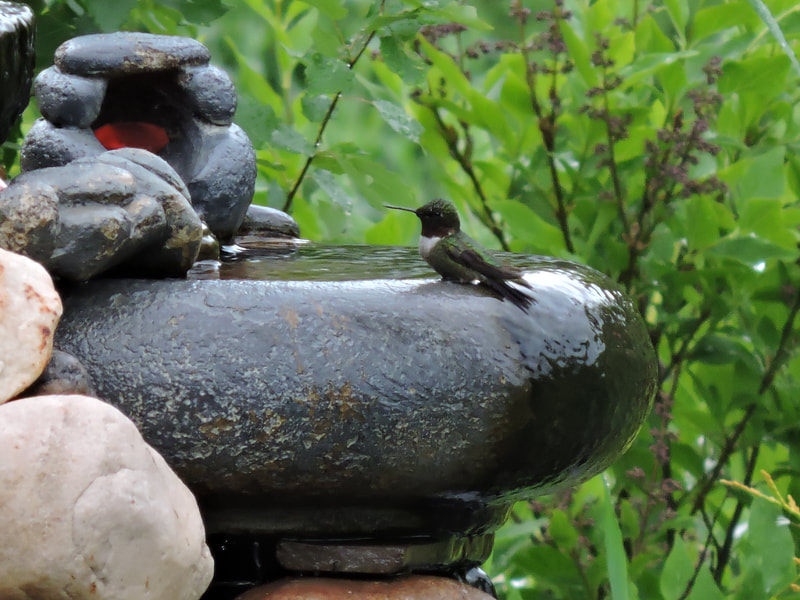
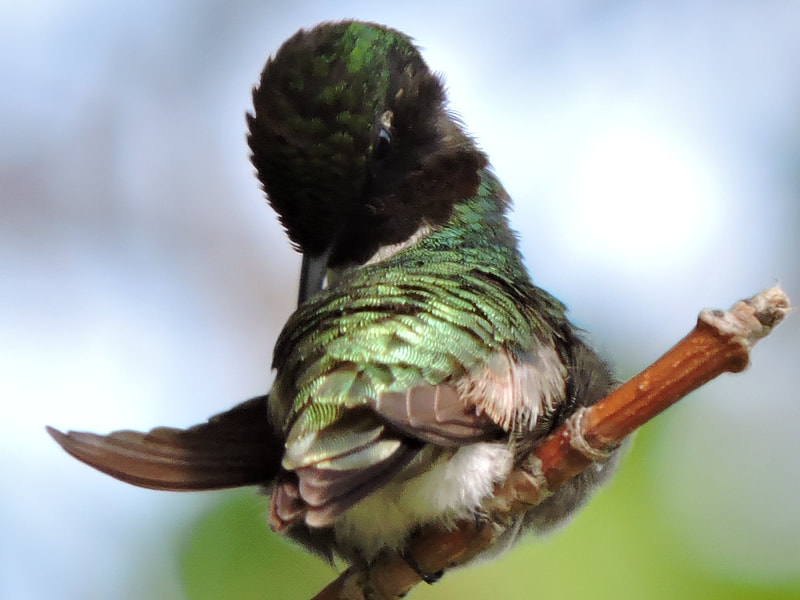
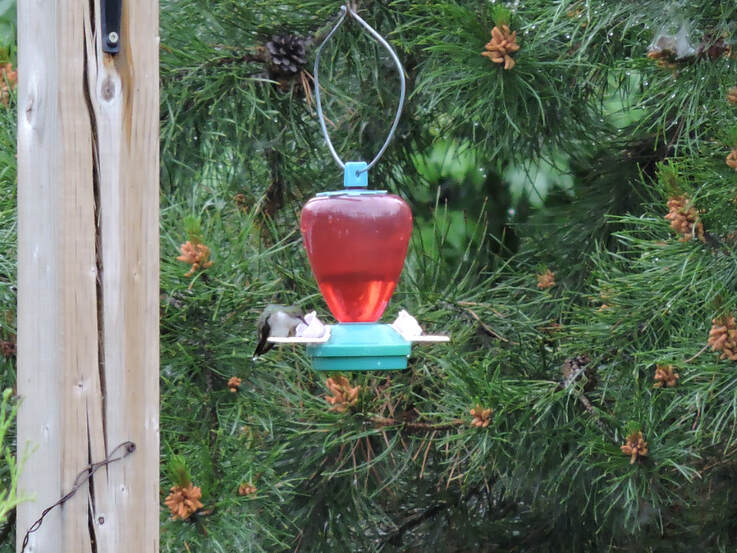
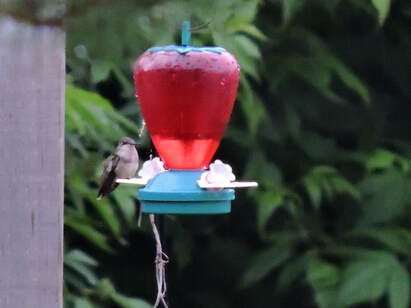
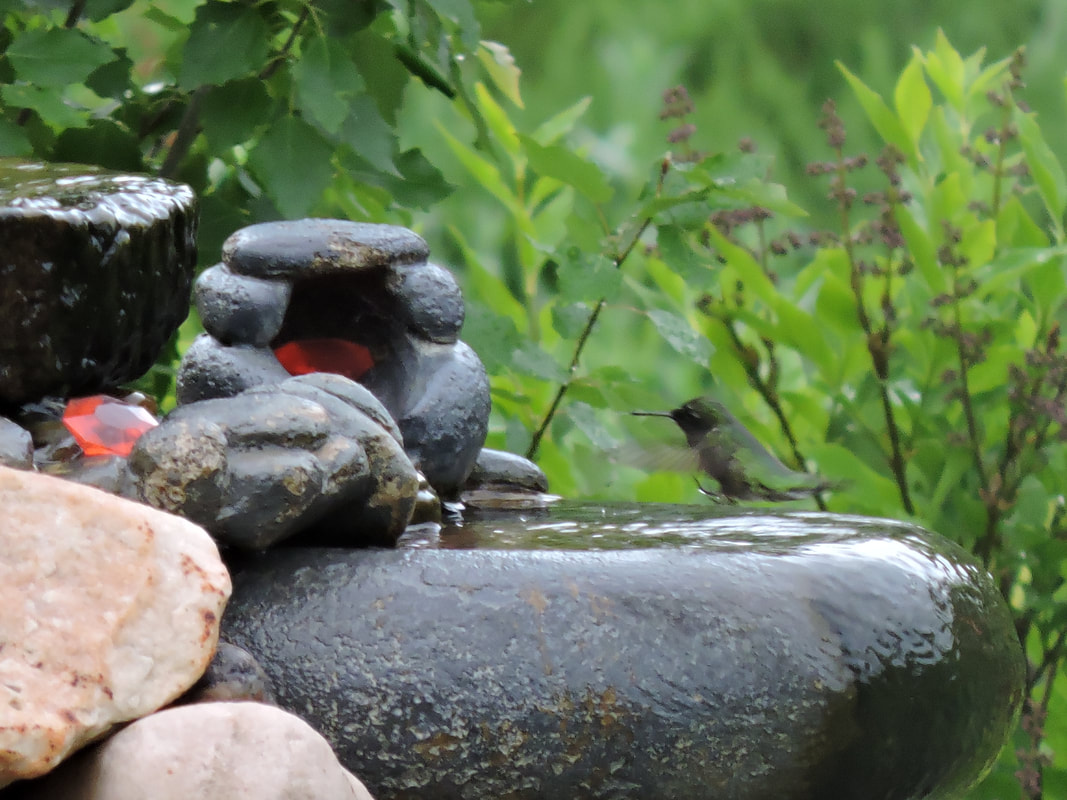
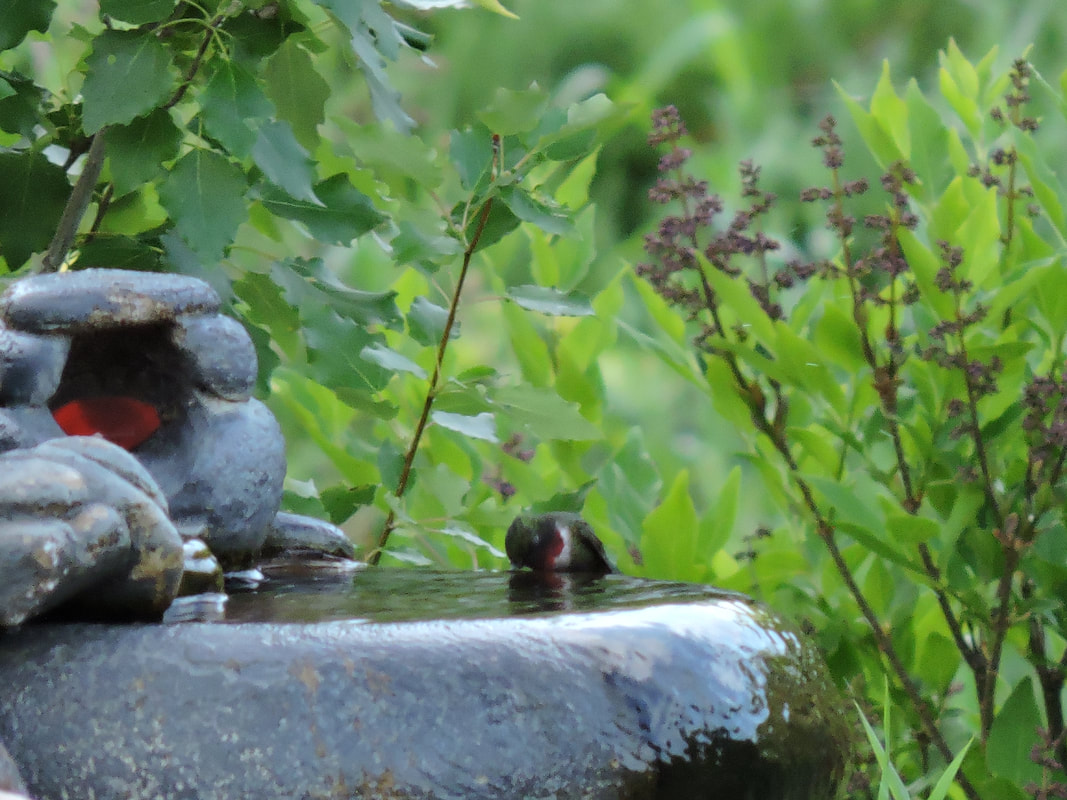
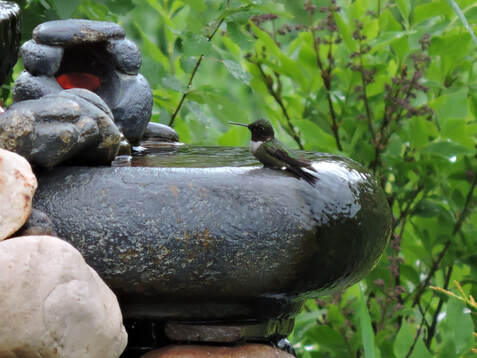
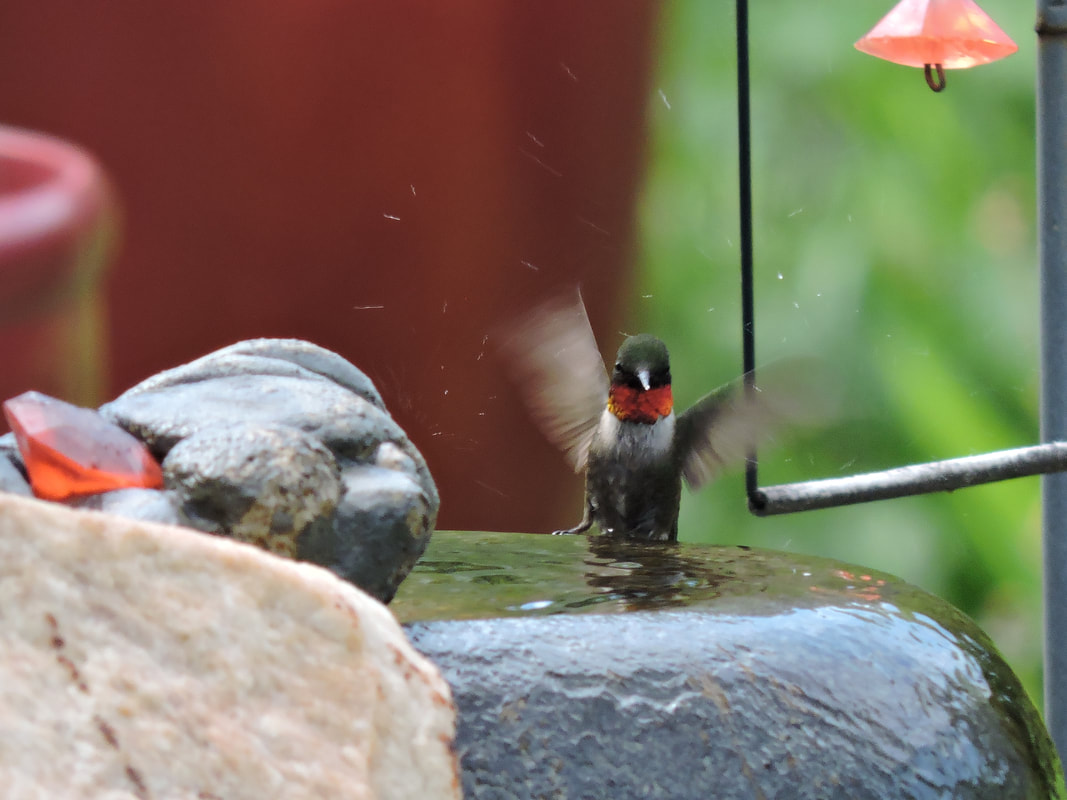
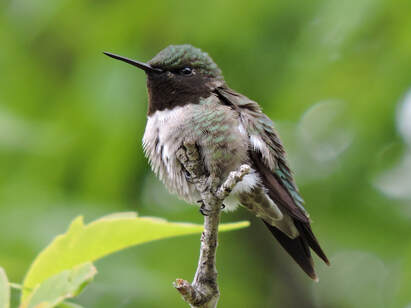
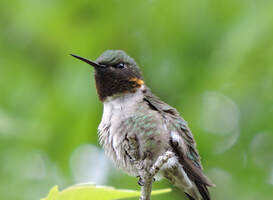
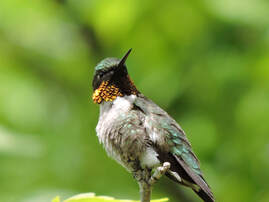
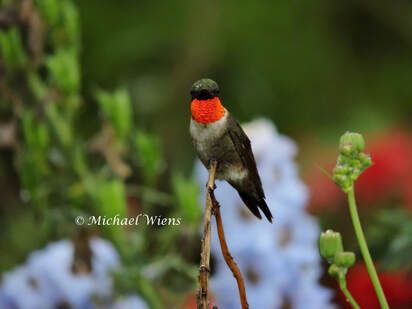
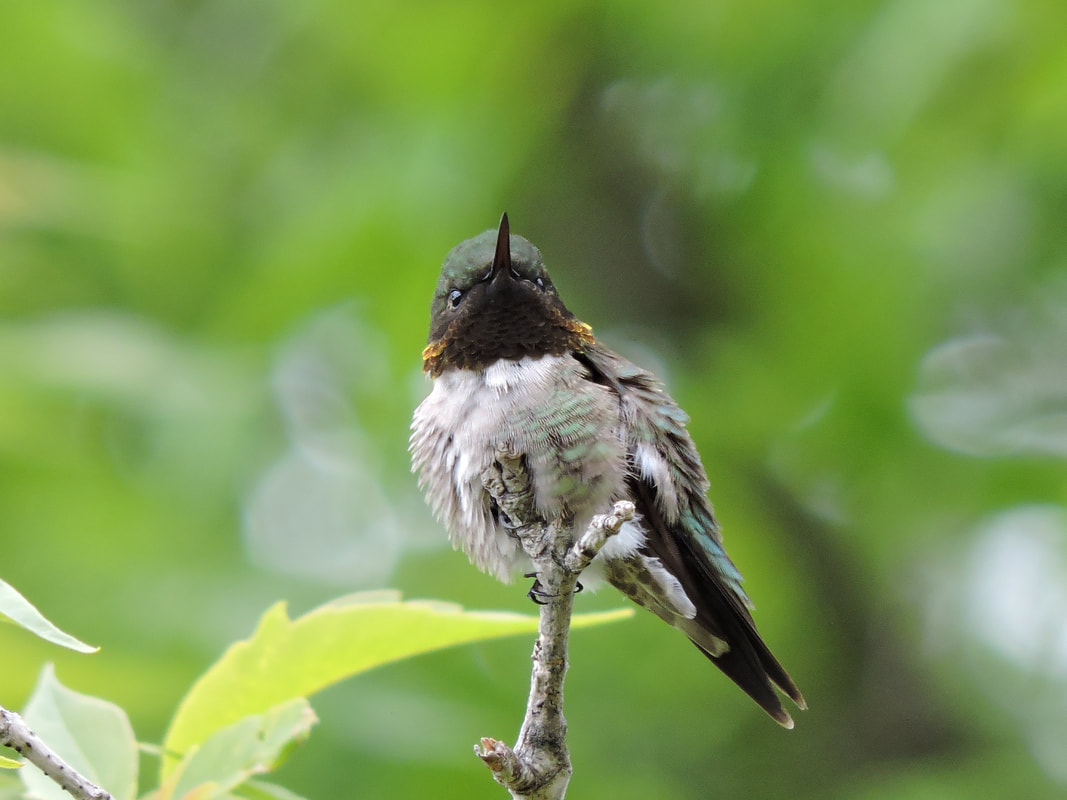
 RSS Feed
RSS Feed
